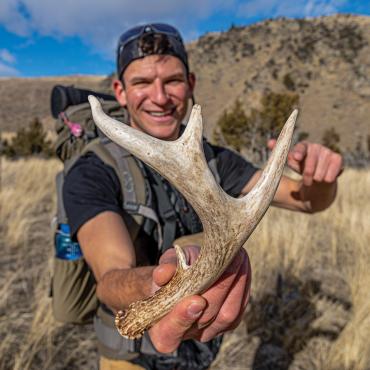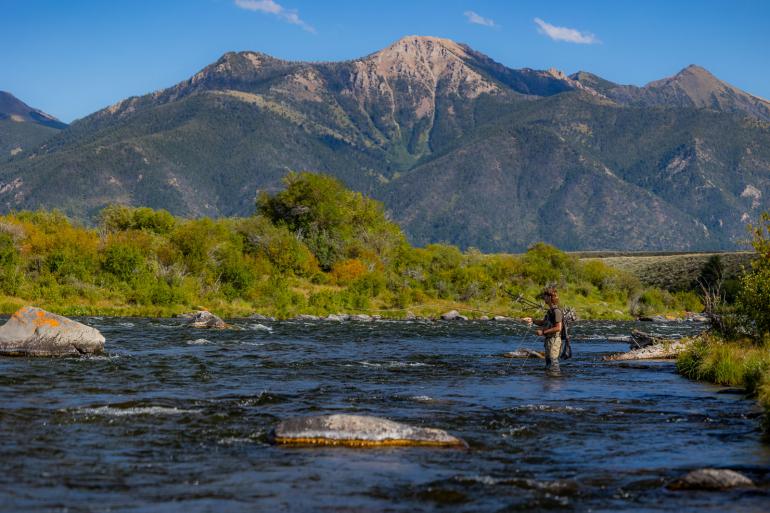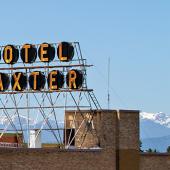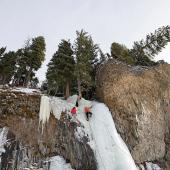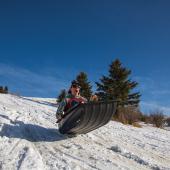Lines on the Water
Fly fishing in the heart of trout country.
Welcome to the fly-fishing capital of Montana, if the not entire West. If you come in search of piscine pursuits, look no further. Indeed, the fishing here lives up to its reputation, and come August, the town dress code might as well be quick-dry shorts, a sun hoody, sandals, sunglasses (with Croakies), and a lucky fishing hat. But aside from looking the part, knowing a few basics is also important. Here’s a rundown on a few of the most popular local waters. For more, pick up a copy of the Cast fishing guide, available for free at most fly shops and outdoor stores around town.
Where to Go
Madison River
From the “50-mile riffle” on its upper section, to Bear Trap Canyon and the flat meanders of its lower section, the Madison has plenty of options. A driftboat or raft is the best way to access the upper, but wading is equally effective on the lower. The flows are dam-controlled, but the water can still blow out from high-flow feeder streams. Early summer is caddis; mid-summer, salmonflies; and late-summer, mayflies and terrestrials.
Gallatin River
Perhaps the most famous trout river in the West, thanks to A River Runs Through It, the Gally is worthy of the hype. The river begins as a trickle in Yellowstone National Park and ends at its confluence with the Jefferson and the Madison at Missouri Headwaters State Park. Excellent fishing is to be had throughout, although “the Canyon” is the most-heavily pressured thanks to its fish-laden pockets, cool water temps, and easy access. The river is best fished wading from the banks—in fact, it’s illegal to fish from a boat on the upper section down to the confluence with the East Gallatin River, at Manhattan. If you’re just after a few casts in the evening, the Gallatin is tough to beat.
Yellowstone River
The Yellowstone originates south of the Park in some of the most remote country in the Lower 48. When folks around town refer to fishing on the ’Stone, however, they’re typically referencing the Paradise Valley section, from Gardiner to Livingston, and even further downstream to Big Timber. The fishing is dictated by flows. Springtime pre-runoff can be good, but the real goods are had once runoff subsides in late June. The Yellowstone is primo streamer water early-season, and dry-dropper territory later in the summer. It’s a big river, and wading can be difficult—but it’s not impossible. The best way to fish the Yellowstone is from a raft, stopping at good runs to wade.
Lakes
Both alpine lakes and lowland reservoirs can be productive at the right time of year. Just after ice-off in May, trout tend to cruise the shorelines of Ennis, Quake, Hebgen, and Henry’s lakes looking for easy meals. All these stillwaters can be effectively fished from shore in early spring before the fish move out to deeper waters. Once things warm up, the high-mountain lakes really turn on. But with so many possibilities in the Gallatin, Absaroka, and Madison ranges, narrowing down the options is challenging. Fortunately, there are a couple of good guidebooks, with one of the best being Flyfisher’s Guide to Southwest Montana’s Mountain Lakes. If you’re heading anywhere in the high country, bring a rod along—there are fish in just about every lake, pond, and creek in this corner of the state.
Catch & Release vs. Keep & Eat
On heavily-pressured rivers—all the ones mentioned above—catch-and-release is highly encouraged. While it’s legal to keep fish on some of these rivers, if every angler kept a daily bag limit, there would be no fish left. It’s acceptable to bonk a fish for dinner every now and then, especially if it’s unlikely to survive upon release; just try not to make a habit of it. A few standard catch-and-release practices: play fish quickly, keep them in the water, limit handling to a bare minimum, and use barbless hooks.
Bonking fish in reservoirs or at high mountain lakes is less frowned upon. In fact, a lot of folks on big alpine backpacking trips don’t bring much in the way of dinner food, instead relying on trout to fill their stomachs. Bring a packet of Idahoan mashed potatoes, some salmon-rub, and tortillas for gourmet trout burritos.
Etiquette
Fishing etiquette is pretty simple: don’t be a dick on the river. Chat with other anglers, give folks space, share your knowledge with those less experienced, and if floating, don’t dilly-dally and cause a traffic jam at the boat ramp. With some basic courtesy, you shouldn’t run into any issues on the water.

